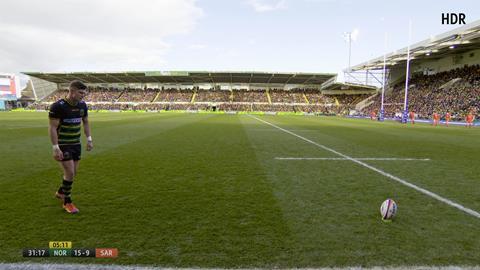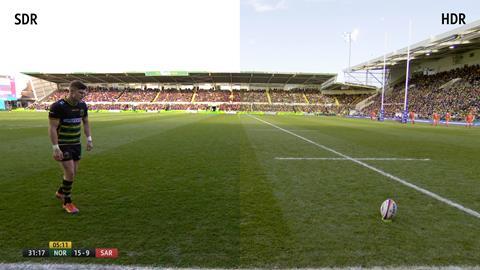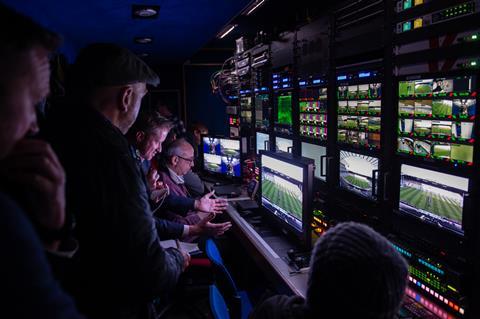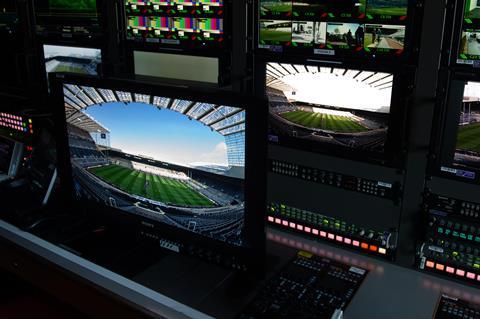The broadcaster becomes the first in the world to offer a commercial multi-sport HDR service

BT is launching an HDR (High Dynamic Range) service on its BT Sport app, which it believes is the first commercially available multi-sport HDR service in the world.
The service will launch for the new football season and provide coverage at resolutions up to 4K.
It will be available to all BT Sport’s 5 million+ subscribers through the BT Sport app, and be available via mobile devices, taking advantage of the HDR displays on most new handsets.
Games will still stream in SDR on the BT Sport app, but particular matches will also be available in HDR – at a charge of £5 a month. HDR content will be produced across a range of sports.

Ahead of the launch, BT Sport is streaming the Champions League final on 1 June in HD HDR, via the BT Sport app. BT Sport subscribers with a compatible mobile phone or tablet will be able to watch the match in HDR for free.
It will also be possible to view the game in HD HDR on a TV screen, via the BT Sport app on Samsung Smart TV, Apple TV 4K, Xbox One S and X or Chromecast Ultra.
BT Sport has opted for HDR as it believes it enables the highest quality TV pictures ever seen in the home. It says it “provides colours that are closer to how we see them in real life, and increases picture quality to new levels by preserving the finest details in the darkest and brightest areas of a picture.”
The broadcaster has been running a series of HDR trials leading up to the Champions League final, including at the Newcastle Finals in May – which included the European Rugby Challenge Cup Final and the Heineken Champions Cup final.

At the event, BT Sport COO Jamie Hindhaugh told Broadcast Sport: “HDR is about making the experience as close as possible to the viewer being there. The image looks almost animated, and there’s a real sense of depth that means the flat image comes to life. There are details in the highlights and lowlights, and viewers have never seen colour as real before. HDR lets you show the colour of the shirts of the players exactly as they should be.”
“We’re the first broadcaster doing regular HDR for mobiles,” adds Hindhaugh. “There’s a very rapid lifecycle of change of phones, compared to TVs, which has led to an ever-growing pool of people with HDR phones. We’re transporting this mobile audience much closer to the event and letting these amazing sporting events speak for themselves. If you view it, you see the difference, so we’re confident when people watch the HDR stream, they will love it.”

BT Sport CTO Andy Beale added: “Seeing is believing. You get the real pitch colour, the real shirt colour and are much more immersed in the game, as most of our perception of depth comes from contrast, not resolution. There’s a lot of detail in the sky, which you can’t usually see as it’s bleached out in the SDR. You can see all the seats, which again just aren’t clearly visible in the SDR image. Once you see the HDR, you ask, ‘How have we accepted SDR for so long?’”
Having said that, Beale admits SDR still has to be the main focus of the broadcaster’s efforts. But he insists HDR adds surprisingly little to the workload for each production. “You can add HDR with as little as one person checking the difference between the SDR and HDR images and ensuring the HDR is ok. Otherwise, it’s the same 4K cameras and the vision mixer is the same – we’ve added an HDR monitor and someone to monitor the images, and that’s all.”
The launch of BT Sport’s HDR service is its latest tech innovation, following its debut as Europe’s first 4K broadcaster in 2016 and its debut of Dolby Atmos sound in 2017.































1 Readers' comment